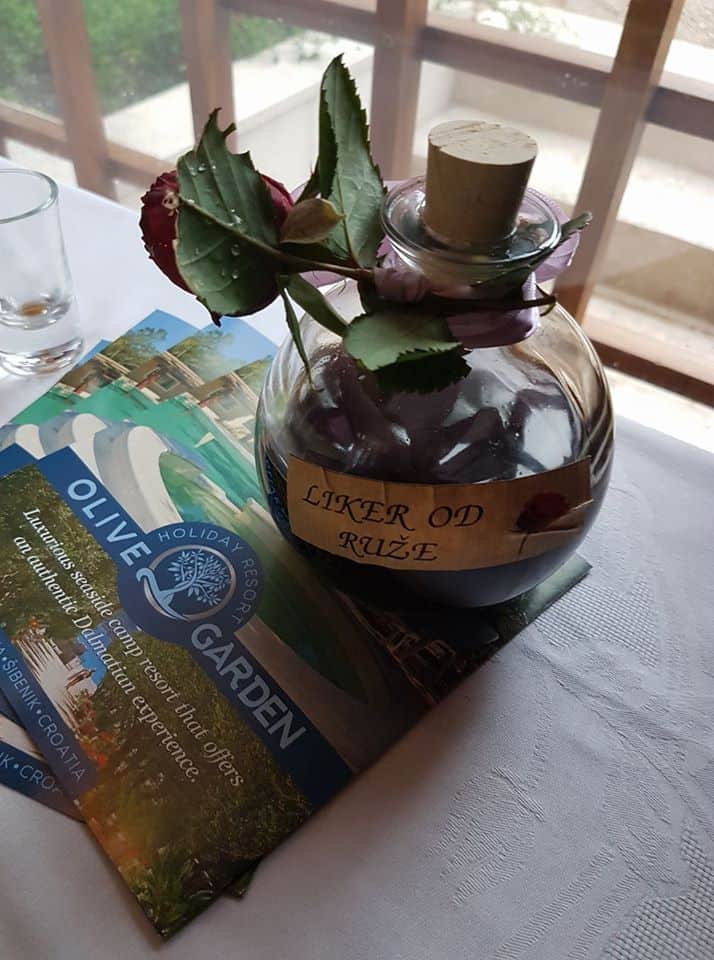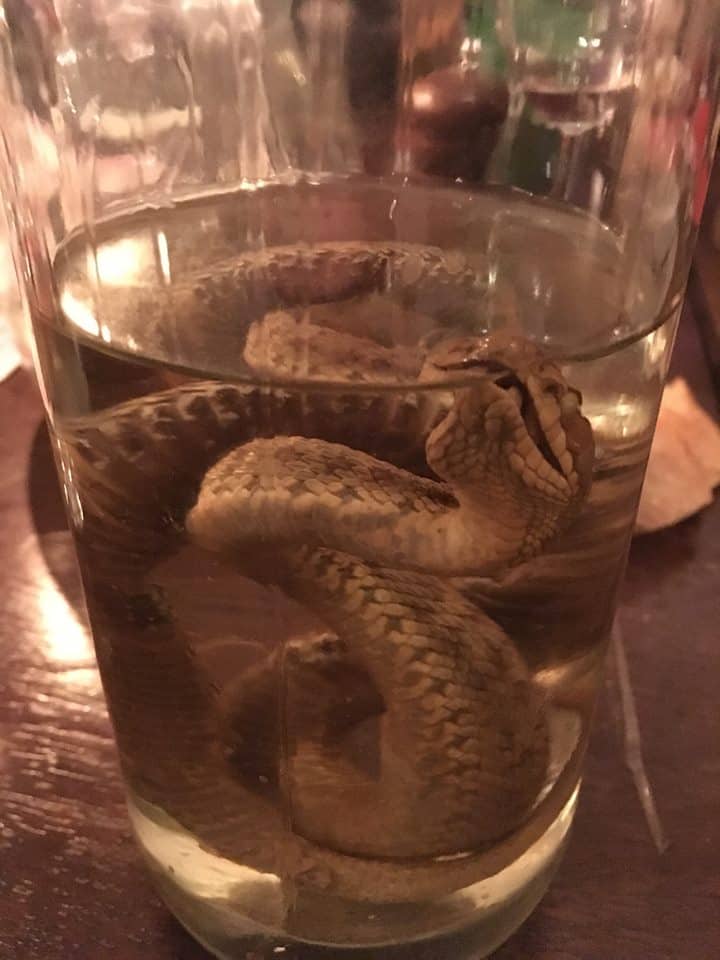Rakija is one of the great fabrics of Croatian society. Hard liquor made from various fruits, made better by adding so much other stuff, such as herbs, mistletoe, figs… All you need to know about Balkan healthcare.
- Disconnecting people since 1273
- Is rakija as healthy as they say?
- Etiquette for saying no
- How do you make rakija?
- Šljivovica
- Lozovača and/or Komovica
- Travarica, Smokvica, Medica, Biska – What else is there?
- Rakija festival in Slavonia: what could possibly go wrong?
- Pelinkovac
- And the winner is…
Disconnecting people since 1273
When I moved to the former Soviet Union in 1992, I met some local colleagues in Yekaterinburg for a quick drink.
Or so I thought.
The Russians had a toast they used when clinking those 200-gramme glasses of vodka – Pod stolom!
This literally translates as ‘Under the Table!’ (both in Russian AND Croatian). I was to find out why about one hour later when at least three litres of vodka had disappeared in a rapid round of toasting. It was my baptism of fire to the Slavic ways of hospitality.
For Russians vodka, for Croatians rakija. Whatever the local firewater in this wonderful part of the world, there is no escaping it. You can only embrace it and hope for the best.
Is rakija as healthy as they say?
If I believed everything I heard in Croatia, I would probably be dead. The medical prowess of rakija is unbelievable. A shot every morning boosts the immune system, rubbing it into your back relieves muscle pain. It reduces cholesterol, as well as the chances of having a stroke or heart attack. I have never seen any medical evidence to back up these claims. But what I can say is that I have seen some very old people in Croatia who look very healthy, and who swear by their daily rakija medicine.
I can, however, confirm that drinking too much rakija contributes directly to a reduction in consciousness.
Croatians most often consume rakija as an apéritif, as it supposedly improves digestion. That means that there will be a “čašica rakije” (a glass of rakija) before any meal, which will often translate into “as soon as you enter someone’s house”.
Etiquette for saying no
One of the things you quickly learn about rakija in Croatia is that every family seems to make their own. Even worse than that, every family which makes rakija insists that not only is theirs the best rakija, but you have to try it so that you can agree.
Not all of them are correct in their claims. In fact, almost none of them are.
My experience has been that once the rakija bottle comes out, you might as well write off the rest of the day. Polite appreciation of home-made rakija only encourages them and leads to continued topping up of your glass. Again and again, and now you realise why those Russian talk about life under the table when they say Cheers!
Saying no is hard! You can try to say that you have to drive, but this is a tough sell if you live across the street. Although I have not taken antibiotics for about 30 years, I seem to be constantly taking them in Croatia. It is a perfect excuse.
The other option is to check for house plants and show them a little love when nobody is watching.
How do you make rakija?
Full disclosure – I have never tried. But here is a man who has, and who went to the trouble of producing a very informative video about the process. He was even sober enough to get the camera pointing in the right direction.
Croatian purists among you may complain that this rakija video is about making rakija in Macedonia. It is, but trying to find good quality (and sober) videos explaining how to make this miracle medicine in English is not that easy. Besides, people in the know tell me that the process in Macedonia is pretty similar to Croatia.
The basic process is described in the video above: you get the fruits or grapes, ferment the chopped fruit and then distill the fermented fruit. The fruits most often used in Croatia are plums (to make šljivovica), apricots (rakija od marelice/kajsije), pears (often called Viljamovka and there’ll be a pear fruit within the bottle itself!), quince (rakija od dunje) and extremely rarely figs. There are various versions (and names) of rakija which is made from grapes. The length of fermentation varies greatly, since what you have is yeasts from the fruit creating the actual alcohol. After the fermentation, the rakija master often needs to add some water, to make rakija of acceptable strength.
And then, after the completion of that process, comes the second step. That is the stage in which different fruits, condiments, herbs and other spices get added to the basic rakija, to make the more complex flavours.
Šljivovica
But is there is one fruit which symbolises rakija, it is surely the plum (šljiva in Croatian, thus the name). The modest plum is synonymous with rakija is some places, especially in eastern Croatia. It’s often aged in old barrels, so when you’re offered a šljivovica and it’s yellowish, it’s a safe bet that it’s been aged. Or at least someone added edible colouring to appear as if it’s been aged.
Lozovača and/or Komovica
Both of these are made fermenting the grapes, let’s be clear. The key difference is that in the production of lozovača (often called just “loza”) you ferment the ground-up grapes, while komovica is made from what’s left-over AFTER you’ve used the grapes to make wine. It’s obvious that the drink made from the entire grape tends to be of higher quality. But, there’s lot to be said about the higher-end komovica (sometimes also called tropica) and you will often not be able to tell the difference.
Komovica is the rakija you’d use as a basis for other drinks, made by adding sugars and stuff to loza or komovica to make more complex flavours.
Travarica, Smokvica, Medica, Biska – What else is there?
Croatians make rakija out of just about anything they can lay their hands on. One of the most fragrant I have tried was rose petal rakija at the Olive Garden Resort in Jadrija near Šibenik. It’s not made by fermenting roses into rakija, which obviously wouldn’t work, but by creating the syrup using rose petals and sugar, and then adding the syrup to base rakija (usually lozovača or good komovica) to add the flavour.

Croatia has a wide variety of wonderful and very flavoursome rakijas, which I do encourage you to try. Here is the non-comprehensive list, where you will get to know the most popular and some weird ones:
Travarica is one of the most ubiquitous, literally herb liqueur, which has a variety of herbs, including sage. Smokvica or smokovača pays alcoholic homage to the humble fig, most often figs are added to loza after the fermentation to create the sweet fragrant flavour – if you’re ever offered rakija made by fermenting figs themselves, make sure you try it! Medica (or medovica or medovača) takes your appreciation of honey to the next level, as it’s honey (and often some herbs) added to the basic lozovača. Rogačica is made from rogač (carob), a fruit often seen in Dalmatia and used in cakes and to make rogačica. Višnjevac and orahovac are usually much sweeter drinks, made from sour cherries (višnjevac) and walnuts (orahovac) added to rakija with quite a lot of sugar.
Biska is one of the most sought-after delicacies. Among its four ingredients is mistletoe. An Istrian speciality, biska shines at the Istrian Grappa Festival each October. It is held in Hum, which is officially the world’s smallest town.
Rakija festival in Slavonia: what could possibly go wrong?
Slavonia is without doubt the heartland of Croatian rakija. If you think you have a chance of escaping some brandy appreciation on the coast, you have no chance in the eastern heartlands. There are times when I feel that rakija is more ubiquitous than water there.
And what would Croatia be without a rakija festival? And where better to hold it than in Slavonia? As you can see from the video above, the village of Vardarac was the proud host of a Slavonian festival celebrating the hard stuff, but it sadly closed down in 2015 ‘for bureaucratic reasons’.
Pelinkovac
While Pelinkovac is technically NOT a rakija, it is among the famous international faces of hard liquor in Croatia. Why can’t it be considered rakija? Because it’s made using, and I’m quoting a document prepared by the Croatian Ministry of Agriculture, “ethyl alcohol of agricultural origin”, which usually means potatoes or grains, not fruit. In addition, Pelinkovac will usually be around 31% alcohol content, and proper rakija is much stronger than that.
Pelinkovac is a traditional drink, with more than 150 years of tradition. There are various versions of Pelinkovac available on the Croatian market. The base of the Pelinkovac’s flavour is common wormwood, with added fennel, sage, mint and other stuff. It is not dissimilar to Jagermeister, if that is your thing, and is also mostly served as a digestive. Its history is fascinating, and you can learn all about it in the video above.
And the winner is…

There are many, many more types of rakija all over the country to be enjoyed. I fondly (well actually not so fondly) recall one make from olives by the local priest on Hvar many years ago.
Last year, for a bit of fun, I asked my Facebook friends for their most extreme rakija experiences for an article I subsequently wrote.
The winner was undoubtedly this gentleman, whose poison (possibily literally in this case) is shown above and below.
And you thought there were no snakes in Croatia…
See you under the table!











